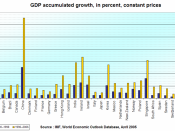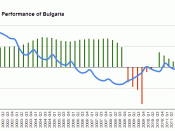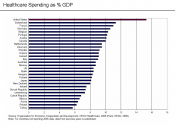In the second half of 2003, the U.S. economy grew at an annual rate of 6 percent. The pickup momentum showed no sign of abating in the first quarter of 2004 and is projected to continue in the rest of the year. Gross domestic product (GDP) in the year increased by 3.1 percent, the growth rate in the third quarter, in particular, reached 8.2 percent. In the opinion of U.S. mainstream economists; this is a natural reflection of the growth of U.S. labor productivity. The personal consumption expenditure, which accounts for about two thirds of the country's gross domestic product (GDP) and serves as a major engine of economic growth, has been increasing. The expenditure expanded 0.5 percent and 0.2 percent in the first two months 2004, respectively. U.S. economists said that the annual growth rate of U.S. labor productivity was 3 percent - 4 percent, plus the 1 percent contribution of the increase in labor force.
The number of new unemployment benefit claimants in the country fell 14,000 to a three-year low of 328,000 and employers added 308,000 new workers to payrolls in March, the highest level in four years. Planned job cuts also dropped to 68,034 in April, a 20 percent decline from last year, survey by Challenger, Gray and Christmas, an outplacement company, showed.
According to statistics released by the U.S. Department of Commerce, personal consumption, government expenditure, private investment and export growth are the four pillars for the growth of the U.S. economy. Viewed from the contribution of the country's economic growth, the contribution of personal consumption and government expenditure to economic growth assumed a downward trend, while the contribution of private investment and exportation to economic growth witnessed a fairly big rise. Investment by private departments has shaken off the negative growth registered since...


